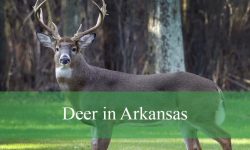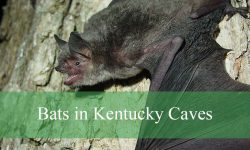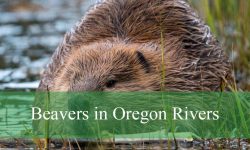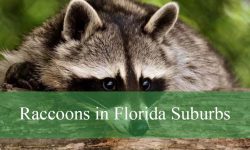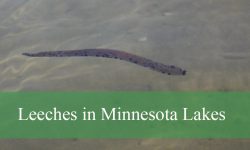In Washington State, raccoons are widespread, adapting effortlessly to both natural environments and urban settings. While many people assume there is only one kind of raccoon, wildlife studies have identified two recognized subspecies that can be found in the region.
The Pacific Northwest raccoon is the most common, thriving throughout the mainland portions of Washington. In contrast, the Vancouver Island raccoon is a smaller, more localized type that occurs naturally only on nearby Vancouver Island, just off the coast. Together, these subspecies provide a fascinating glimpse into how raccoons have diversified across habitats in the Pacific Northwest.
This article explores both types of raccoons that occur in or around Washington State. We will look at their physical characteristics, identification tips, behavior, diet, and preferred habitats. By the end, you will have a complete guide to spotting these nocturnal mammals in the wild or in your neighborhood, as well as understanding their important ecological role.
Raccoons in Washington State: An Overview
Washington is home to a variety of ecosystems, from the temperate rainforests of the Olympic Peninsula to the dry shrub-steppe of eastern Washington. This diversity of landscapes creates suitable conditions for raccoons to thrive. They are opportunistic generalists, meaning they can adapt to forests, wetlands, coastal zones, farmlands, and urban areas.
The raccoons found here are part of the larger species Procyon lotor, which is distributed widely across North America. However, within Washington, two specific subspecies are recognized by biologists: the Pacific Northwest raccoon (Procyon lotor pacificus) and the Vancouver Island raccoon (Procyon lotor vancouverensis). While they share many traits, they differ in size, distribution, and some subtle physical features.
Both types of raccoons play a significant role in the ecosystem. They are omnivores that help regulate populations of insects, amphibians, and small mammals, while also spreading seeds from the fruits they consume. At the same time, their adaptability has brought them into frequent contact with humans, especially in suburban and urban neighborhoods.
The Pacific Northwest Raccoon
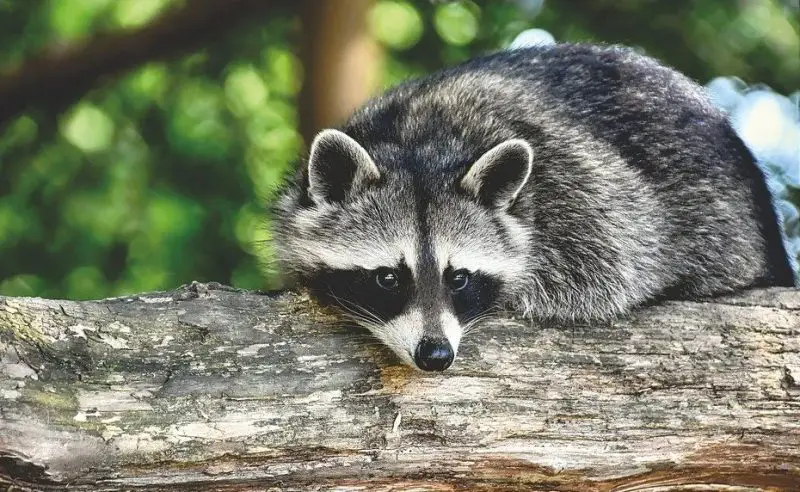
Characteristics and Identification
The Pacific Northwest raccoon is the dominant subspecies found throughout the mainland of Washington. Adults typically weigh between 12 and 25 pounds, though some larger individuals can reach up to 30 pounds in areas where food is abundant. Their body length ranges from 24 to 38 inches, including the distinctive bushy tail marked with alternating dark and light rings.
The fur of this subspecies is generally darker than that of raccoons in other parts of North America. This darker coat helps them blend into the moist, shaded forests of the Pacific Northwest. Their skulls tend to be broader and flatter, which wildlife biologists have noted as one of the key features distinguishing them from other raccoon subspecies. The classic black mask of fur across the face is present and serves as both camouflage and a way to reduce glare during nighttime activity.
When observed in natural settings, Pacific Northwest raccoons appear stocky and well-muscled. Their front paws resemble tiny human hands, allowing them to manipulate food items, open containers, and even turn doorknobs in residential areas. This dexterity is a hallmark of the species and contributes to their reputation for cleverness.
Behavior and Activity Patterns
The Pacific Northwest raccoon is primarily nocturnal. During the night, it forages for food in wetlands, along rivers, and in urban neighborhoods. Its diet is highly varied, consisting of crayfish, frogs, small fish, rodents, insects, fruits, berries, and even garbage when living near humans. In coastal areas of Washington, raccoons often raid tidepools at low tide, feeding on crabs, clams, mussels, and sea urchins.
They are solitary for most of the year, although females with young may be seen together in the spring and summer months. Breeding typically occurs in late winter, with litters of two to five kits born in early spring. Mothers are extremely protective of their offspring, often moving them between dens to keep them safe from predators.
Despite their solitary nature, raccoons may share communal dens during colder months, particularly in harsh winters. Tree cavities, abandoned burrows, attics, and chimneys are common denning sites in both rural and urban environments.
Habitat and Distribution in Washington
Pacific Northwest raccoons are found across the entire state, from coastal estuaries to mountain foothills. They are especially common in the Puget Sound lowlands and along rivers where aquatic prey is abundant. In eastern Washington, they inhabit riparian corridors and farmlands, adapting readily to human presence.
Urban raccoon populations are thriving in cities like Seattle, Tacoma, and Spokane. These animals often exploit trash bins, pet food left outdoors, and backyard ponds stocked with fish. While this brings them into conflict with homeowners, it also demonstrates their remarkable ability to survive in human-dominated landscapes.
In natural ecosystems, raccoons are important mesopredators, meaning they occupy a middle role in the food web. They face predation from coyotes, bobcats, and large birds of prey, but their intelligence and adaptability allow them to persist in a wide range of conditions.
The Vancouver Island Raccoon
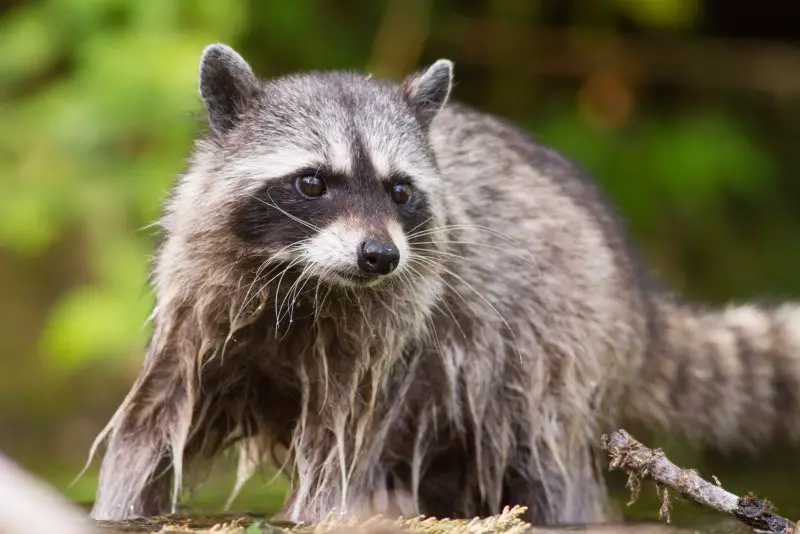
Characteristics and Identification
The Vancouver Island raccoon is a distinct subspecies that occurs only on Vancouver Island, just off the coast of Washington State and British Columbia. Although it does not naturally occur on the Washington mainland, its close proximity makes it part of the raccoon diversity associated with the region.
This subspecies is noticeably smaller than the Pacific Northwest raccoon. Adults typically weigh between 8 and 18 pounds, with a more slender body build. Their fur is still relatively dark compared to raccoons in other parts of North America, but it is slightly shorter and less dense than that of their mainland relatives. The facial mask remains prominent, and the ringed tail is similar in appearance.
One of the adaptations of the Vancouver Island raccoon is its reliance on coastal and intertidal habitats. These raccoons are particularly skilled at foraging along shorelines, turning over rocks to find crabs, mussels, and other marine invertebrates.
Behavior and Diet
Like their mainland relatives, Vancouver Island raccoons are nocturnal and opportunistic in their feeding habits. However, their diet is more heavily dependent on marine resources due to the abundance of food in coastal environments. They spend long hours exploring beaches, mudflats, and tidepools, demonstrating remarkable dexterity in handling shellfish.
They are less likely to be encountered in dense urban environments compared to Pacific Northwest raccoons, though they may enter rural areas or small communities along the island’s coast. Kits are born in spring after a winter breeding season, and the family remains together for several months before the young disperse.
Although they are generally shy around humans, Vancouver Island raccoons will take advantage of easy food sources such as unsecured garbage or pet food. Their smaller size makes them somewhat less intimidating than their mainland counterparts, but they remain equally resourceful.
Habitat and Range
The Vancouver Island raccoon is restricted to Vancouver Island and some nearby smaller islands. It is not naturally found on the mainland of Washington, but given the island’s close proximity and ecological connection to the Pacific Northwest, it is often included in regional wildlife discussions.
These raccoons thrive in coastal forests, estuaries, and marine shorelines. They are particularly abundant in areas where freshwater streams meet the ocean, providing access to both terrestrial and aquatic food sources. Unlike the Pacific Northwest raccoon, they are less commonly found in agricultural lands or deep inland forests.
Comparing the Two Types
While both raccoons share the same species designation, their differences highlight how subspecies can adapt to specific environments. The Pacific Northwest raccoon is larger, darker, and more widely distributed across Washington’s mainland. In contrast, the Vancouver Island raccoon is smaller, localized, and more marine-oriented in its feeding habits.
Both display the remarkable intelligence and dexterity that raccoons are famous for. Their ability to exploit a wide variety of foods and habitats has allowed them to thrive despite pressures from predators and human expansion. For wildlife enthusiasts, observing these animals offers a glimpse into the adaptability of mammals in the Pacific Northwest.
Coexisting with Raccoons in Washington
Raccoons are an important part of Washington’s ecosystems, but they can also become nuisances when they raid trash bins, gardens, or poultry houses. Homeowners can reduce conflicts by securing garbage containers, removing outdoor food sources, and sealing entry points into attics or crawl spaces.
It is also important to remember that raccoons can carry diseases such as rabies and leptospirosis, as well as parasites like raccoon roundworm. For this reason, it is best to admire them from a distance and avoid feeding or handling them. Wildlife agencies recommend using deterrents such as motion-activated lights or sprinklers if raccoons become a persistent problem around homes.
Despite these challenges, raccoons contribute positively to ecosystems by controlling pest populations and spreading seeds. Their adaptability ensures that they will remain a familiar presence in both wild and urban landscapes across Washington.
Best Places and Times to Spot Raccoons
For those interested in observing raccoons in their natural environment, Washington offers many opportunities. Coastal areas, wetlands, and riparian corridors are prime habitats. National parks such as Olympic and Mount Rainier often provide sightings near campgrounds or along streams. In urban areas, raccoons may be seen at night in neighborhoods, parks, and waterfronts.
The best time to see raccoons is during the late evening or early night hours, particularly in spring and summer when food is abundant. They are less active during extreme cold spells, though they do not hibernate fully and may emerge on warmer winter nights.
Using red-filtered flashlights can help wildlife enthusiasts observe raccoons without startling them. Quiet observation from a distance ensures both human safety and the well-being of the animals.
Is It Legal to Own a Raccoon in Washington?
In Washington State, it is illegal to keep raccoons as pets. Raccoons are classified as wild animals under state law, and the Washington Department of Fish and Wildlife strictly regulates their possession. These rules are in place because raccoons are not domesticated animals; they have complex needs that are difficult to meet in a household setting, and they can pose risks to both humans and other pets.
One of the primary concerns is public health. Raccoons are known carriers of rabies, leptospirosis, and raccoon roundworm, all of which can be transmitted to people or domestic animals. Because of these risks, individuals are prohibited from capturing, relocating, or keeping raccoons without a specific wildlife rehabilitation or scientific research permit. Licensed rehabilitators may temporarily care for injured or orphaned raccoons, but even in these cases, the animals are released back into the wild when they are healthy.
For anyone interested in observing raccoons more closely, the best option is to enjoy them responsibly in their natural habitat or visit wildlife centers that provide educational programs. Attempting to raise a raccoon at home not only violates state law but also undermines the animal’s welfare, since raccoons thrive best when allowed to live freely in the ecosystems they are naturally adapted to.
Conclusion
Washington State is home to two recognized subspecies of raccoons: the Pacific Northwest raccoon on the mainland and the Vancouver Island raccoon nearby on Vancouver Island. Both are fascinating examples of adaptation, showcasing how a single species can diversify across different habitats.
The Pacific Northwest raccoon thrives in forests, wetlands, and cities throughout Washington, displaying remarkable adaptability. The Vancouver Island raccoon, though smaller and restricted to island habitats, has carved out a specialized niche along marine shorelines. Together, they represent the resilience and versatility of raccoons in the Pacific Northwest.
By understanding their characteristics, behaviors, and habitats, residents and visitors alike can better appreciate these nocturnal mammals. With thoughtful coexistence strategies, raccoons will continue to be an integral part of Washington’s wildlife for generations to come.
FAQs about Raccoons in Washington State
Are raccoons common in Washington?
Yes, raccoons are widespread across the state, especially in forests, wetlands, and urban areas where food sources are abundant.
What do raccoons eat in Washington?
Raccoons are omnivores that consume crayfish, frogs, fish, rodents, insects, fruits, berries, and human food waste. Coastal populations often forage for shellfish and crabs.
Are raccoons dangerous to humans or pets?
Raccoons are not typically aggressive but may defend themselves if cornered. They can carry diseases, so it is best to avoid direct contact.
Can raccoons be found in Washington cities?
Yes, raccoons are thriving in urban areas such as Seattle, Tacoma, and Spokane. They often raid garbage bins and outdoor pet food.
How can I keep raccoons away from my property?
Secure garbage containers, bring pet food indoors, seal entry points into buildings, and use deterrents like motion-activated lights or sprinklers.

